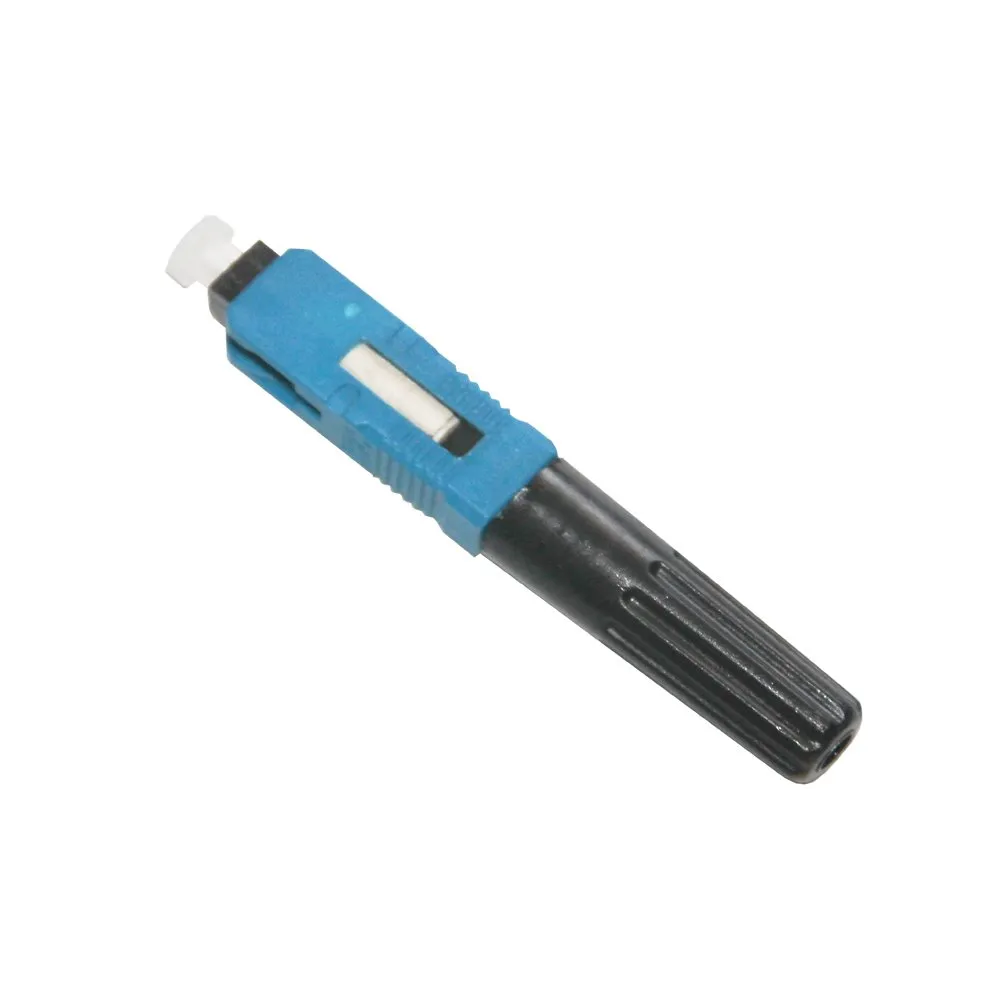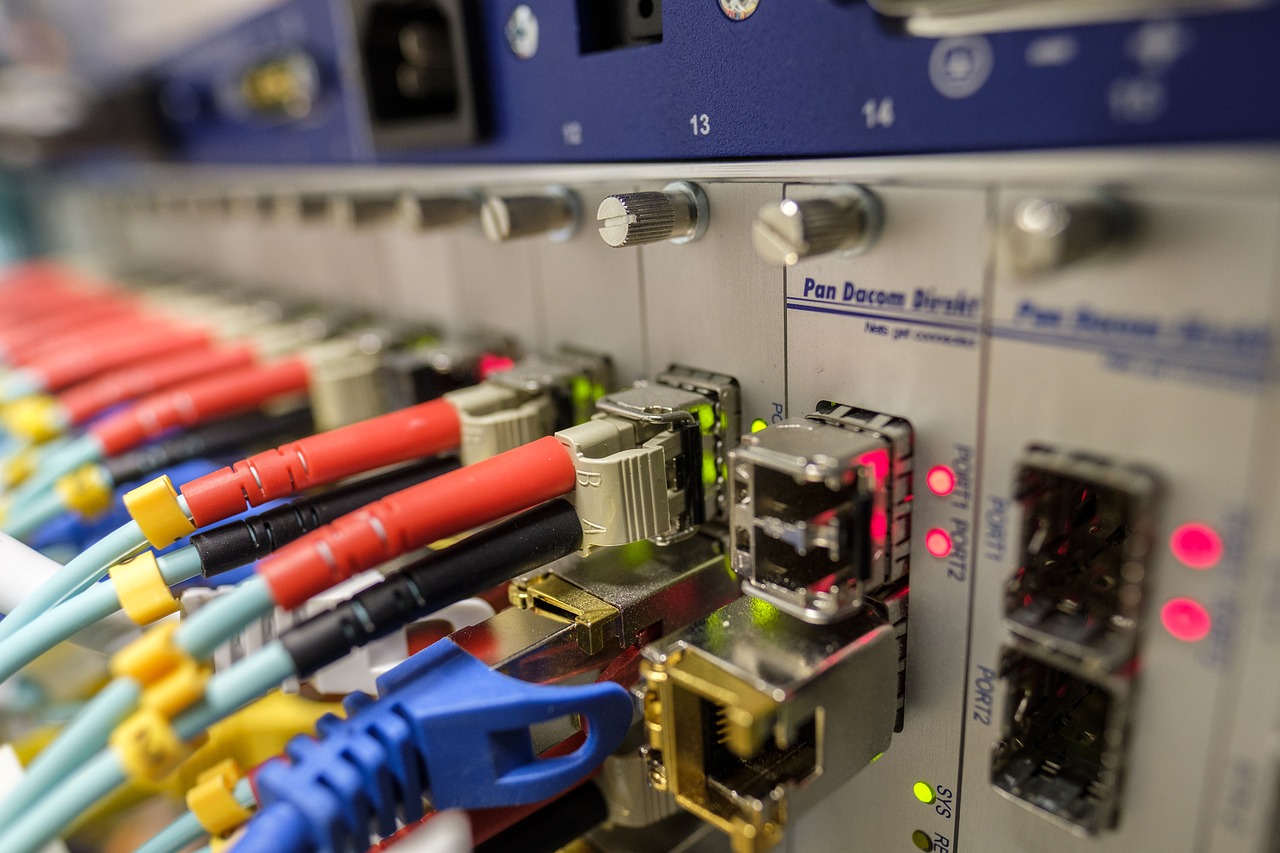The Essential Guide to 3M SC/APC Blue Fast Connector for Fiber Optic Applications

Understanding Fiber Optic Technology and Its Importance
Fiber optic technology has revolutionized the way data is transmitted, offering unparalleled speed and reliability. Fiber Optic communication involves the use of optical fibers to transmit information as pulses of light. These thin strands of glass or plastic are designed to guide light, allowing for the efficient transfer of data over long distances.
What is Fiber Optic Communication?
The Basics of How Light Transmits Data
In fiber optic communication, data is transmitted in the form of light pulses. These pulses travel through the core of the optical fiber, undergoing total internal reflection to propagate along the length of the fiber. This process enables rapid data transmission with minimal signal loss.
The Advantages of Fiber Over Traditional Copper Cables
The transition from traditional copper cables to Fiber Optic technology offers several advantages. Fiber optics can carry more data over greater distances at higher speeds compared to copper cables. Additionally, they are immune to electromagnetic interference, making them ideal for high-bandwidth applications.
The Evolution of Fiber Optic Technology
Milestones in Fiber Optic Development
The development of fiber optic technology has seen significant milestones, including advancements in fiber manufacturing techniques, improvements in signal amplification, and the introduction of faster transmission protocols.
Current Trends in Fiber Optic Communication
Current trends in fiber optic communication focus on enhancing bandwidth capacity and optimizing network infrastructure for emerging technologies such as 5G and Internet of Things (IoT) applications.
Exploring the 3M SC/APC Blue Fast Connector
The SC/APC connector, also known as the Subscriber Connector with Angled Physical Contact, is a crucial component in fiber optic networks. What sets the SC/APC connector apart is its unique design features and the significance of the blue color and APC angle.
What Makes the SC/APC Connector Unique?
Design Features of the SC/APC Connector
The SC/APC connector is distinguished by its precise ceramic ferrule, which ensures optimal alignment and low insertion loss. This design feature allows for efficient signal transmission with minimal interference, making it ideal for high-speed data applications.
The Significance of the Blue Color and APC Angle
The distinct blue color of the SC/APC connector serves as a visual indicator of its angle-polished end face. The Angled Physical Contact (APC) angle minimizes back reflection, reducing signal degradation and enhancing overall network performance.
Installation and Applications of the SC/APC Fast Connector
Step-by-Step Guide to Installing the Connector
Installing an SC/APC fast connector requires precision and attention to detail. Begin by stripping and cleaving the fiber, then carefully insert it into the connector body. Finally, use a fusion splicer or mechanical splice to secure the connection.
Common Uses in Fiber Optic Networks
The versatility of Fast Connectors makes them invaluable in various fiber optic network applications. They are commonly used for field installations, temporary connections during network testing, and quick restoration in emergency situations.
The Role of Drop Cable in Fiber Optic Networks
Understanding Drop Cable and Its Function
Drop cables play a critical role in fiber optic networks, serving as the final link between the distribution network and the end-user's premises. These specialized cables are designed to withstand outdoor environments while efficiently delivering high-speed connectivity to homes and businesses.
Types of Drop Cables in Fiber Networks
There are several types of drop cables used in fiber networks, each tailored to specific deployment scenarios. Some common variations include flat drop cables, round drop cables, and figure-8 drop cables. These cables differ in their physical structure and installation requirements, providing flexibility for various network layouts.
The Importance of Drop Cable in Last-Mile Connectivity
The last mile of connectivity refers to the final leg of the telecommunications network that delivers services to the end-user. Drop cables are instrumental in this stage, bridging the gap between the main distribution network and individual subscribers. Their durability and weather-resistant properties make them essential for reliable and uninterrupted connectivity.
Integrating Drop Cable with SC/APC Connectors
When integrating drop cables with SC/APC connectors, it is crucial to follow best practices to ensure seamless connections and optimal performance.
Best Practices for a Seamless Connection
Proper termination of drop cables with SC/APC connectors involves precise cleaving and alignment techniques. It is essential to maintain cleanliness during the splicing process to prevent signal loss or degradation. Additionally, securing a tight mechanical splice or fusion splice is vital for long-term reliability.
Troubleshooting Common Issues
In some instances, issues may arise during the integration of drop cables with SC/APC connectors. Common problems include poor signal quality, excessive return loss, or unstable connections. Troubleshooting these issues often requires careful inspection of connector end faces, adjustment of splice parameters, or replacement of damaged components.
FTTH: Bringing High-Speed Internet to Homes
Fiber to the Home (FTTH) technology represents a significant advancement in delivering high-speed internet access directly to residential and commercial properties. Unlike traditional internet access methods that rely on copper-based infrastructure, FTTH leverages optical fiber cables to provide unparalleled connectivity.
The Basics of FTTH Technology
How FTTH Differs from Traditional Internet Access
FTTH differs from traditional internet access, such as Digital Subscriber Line (DSL) or cable internet, in its approach to delivering data. While DSL and cable internet utilize existing copper lines for the last mile of connectivity, FTTH replaces these with fiber optic cables, enabling faster and more reliable data transmission.
The Benefits of FTTH for End Users
For end users, the transition to FTTH offers several compelling benefits. With symmetrical upload and download speeds, FTTH provides a more consistent and robust internet experience compared to asymmetrical connections. Additionally, the reliability and low latency of fiber optics contribute to improved performance for activities like online gaming, video streaming, and remote work.
Implementing FTTH with SC/APC Connectors and Drop Cables
Planning and Deploying an FTTH Network
The deployment of an FTTH network involves meticulous planning and strategic implementation. This process begins with a thorough assessment of the target area's infrastructure requirements, including evaluating existing ducts or poles for fiber installation. Once the planning phase is complete, skilled technicians proceed with laying the necessary fiber optic cables and installing distribution points for seamless connectivity.
Real-World Examples of FTTH Success Stories
In various regions around the world, the successful implementation of FTTH has led to transformative changes in internet accessibility. Communities that have embraced FTTH technology have experienced remarkable improvements in connection speeds, enabling residents to engage in bandwidth-intensive activities without compromise. These success stories serve as compelling evidence of FTTH's potential to revolutionize internet access on a global scale.
Conclusion
Recap of Key Points
In summary, the evolution of fiber optic technology has ushered in a new era of high-speed and reliable data transmission. From the basics of light-based data transfer to the intricate components like SC/APC connectors and drop cables, fiber optic communication has demonstrated its superiority over traditional copper-based systems.
Key takeaways from this guide include:
Fiber optic communication relies on the transmission of data through light pulses, offering advantages such as high bandwidth and immunity to electromagnetic interference.
The SC/APC connector's unique design features, including its blue color and APC angle, contribute to efficient signal transmission and reduced back reflection.
Drop cables play a crucial role in providing last-mile connectivity, bridging the gap between the distribution network and end-user premises.
FTTH technology represents a significant advancement in delivering high-speed internet access directly to residential and commercial properties, offering symmetrical upload and download speeds for a more consistent user experience.
The Future of Fiber Optic Communication
As technology continues to advance, the future of fiber optic communication holds promising developments. With ongoing efforts to enhance bandwidth capacity and optimize network infrastructure for emerging technologies such as 5G and Internet of Things (IoT) applications, fiber optics will play an integral role in shaping the digital landscape.
Furthermore, the widespread adoption of FTTH technology is poised to revolutionize internet accessibility on a global scale. As communities embrace FTTH solutions, residents can expect transformative improvements in connection speeds, paving the way for seamless engagement in bandwidth-intensive activities.
In conclusion, fiber optic communication stands at the forefront of modern connectivity solutions, driving innovation and empowering users with unparalleled speed and reliability. The future holds boundless possibilities for further advancements in this dynamic field.
I have summarized key points from earlier sections while projecting potential advancements in fiber optic communication. I have also utilized bullet points for easy navigation within the recap section. Let me know if there is anything else you would like me to add or modify!
See Also
Comprehensive Overview of SC/APC Fiber Optic Connector for FTTH
Mastering 1x32 PLC Fiber Splitter with SC/APC for ABSModule
In-Depth Look at 2.0 x 5.0mm 1FO Mini SC FastConnect Field Connector
Top 5 Tips for SC/APC Field Connector in FTTH Setups
Key Attributes of 3 IN 1 SLIM SC/APC Optical Connector Cable


